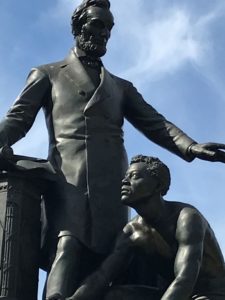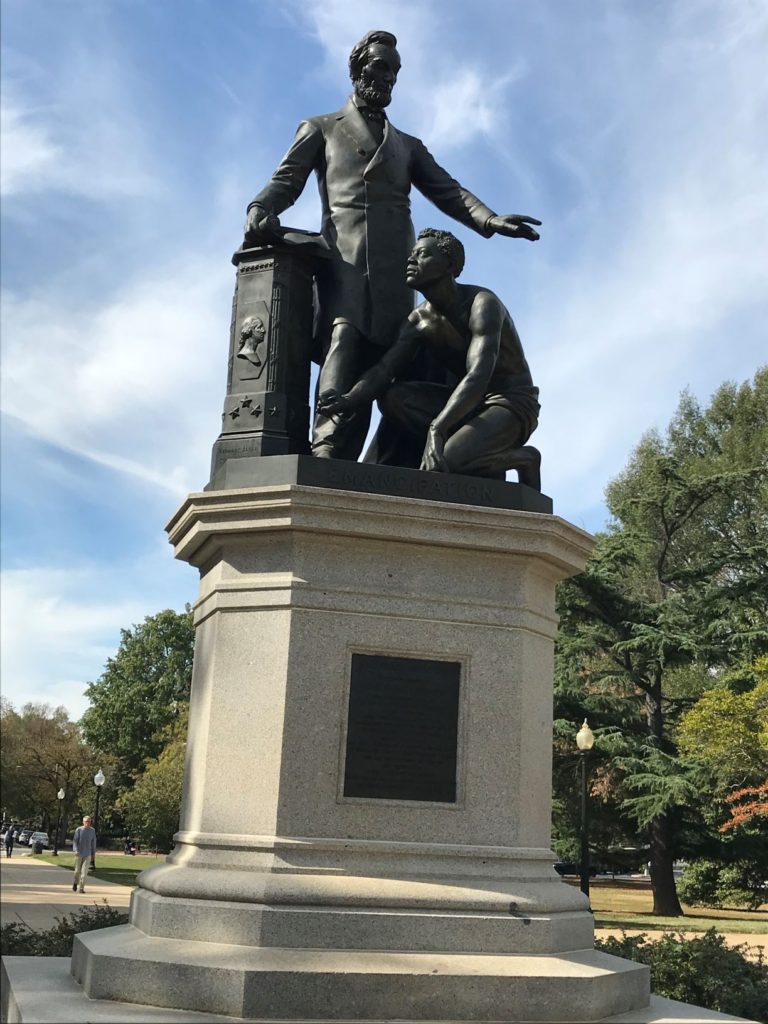 On June 19th, 1865, Union Major General Gordon Granger entered Galveston, Texas and discovered that somehow word had not previously been communicated to the enslaved people that they were free in accordance with Abraham Lincoln’s Emancipation Proclamation effective January 1, 1863. With Granger’s General Order No. 3, June the 19th came to represent the end of slavery in America, and as such became an African American holiday called Juneteenth.
On June 19th, 1865, Union Major General Gordon Granger entered Galveston, Texas and discovered that somehow word had not previously been communicated to the enslaved people that they were free in accordance with Abraham Lincoln’s Emancipation Proclamation effective January 1, 1863. With Granger’s General Order No. 3, June the 19th came to represent the end of slavery in America, and as such became an African American holiday called Juneteenth.
Technically, the Emancipation Proclamation wasn’t a sufficient post-war protector of freedom and actual permanent freedom was only guaranteed by ratification of the 13th Amendment on December 6, 1865. But the date stuck because of its immediate meaning and has been celebrated by African Americans since that time, ebbing and flowing in response to societal suppression or promotion. Some local governments and states acknowledged the holiday, and more recently the trend is for more governments and companies have established the day as an official holiday or day off from work. Juneteenth is one element of a long history related to the attainment of equal rights for African Americans and all Americans, although our nation has also been plagued by historical and continuing systemic racism.
One aspect of that history that remains controversial today is the Freedman’s Memorial in Washington, DC. Often referred to as the “Emancipation Memorial” or “Freedom’s Memorial” or even “Lincoln and Emancipation,” the statue by sculptor Thomas Ball was erected in Lincoln Park east of the U.S. Capitol. It depicts Abraham Lincoln standing over an enslaved black man being released from his shackles and beginning the slow rise to equality. The face of the African American man represents that of a real person, Archer Alexander. Frederick Douglass was the keynote speaker at the 1876 dedication, which was also attended by President Ulysses S. Grant. Importantly, the funding of the statue was solely provided by freedmen (and women), with the first $5 donated by former slave Charlotte Scott of Virginia. While they didn’t have a say in the final design, the statue represents the efforts of African Americans to commemorate their emancipation from centuries of forced servitude.
Much of the controversy stems from the positioning of the figures, in particular the apparent subservient position of Archer Alexander. The original concept of Lincoln freeing the slaves and the depiction of now formerly enslaved men to rise seems to have been lost from current understanding. Another problem with today’s interpretation is the tendency to cherry pick from Frederick Douglass’s dedication speech, a wonderful oratory that delved into the complex relationships between Lincoln, Grant, former slaves, and the continuing struggle for equality. As the statue was being dedicated, so too was the Reconstruction period coming to an end. Whereas Reconstruction had guaranteed the rights of African Americans, the Jim Crow era that arose in response sought to destroy those rights. As W.E.B. Dubois said, “the slave went free; stood a brief moment in the sun; then moved back again toward slavery.” Alas, our long history of systemic racism continues to this day.

As we celebrate Juneteenth 2020 we are again faced with the realization that racism and inequality are not an artifact of the past; they are a fact of reality today. This again offers us an opportunity to better understand our history, and use that understanding to, as Lincoln said, save “our last best hope of earth.”
As an Abraham Lincoln scholar, I hope that everyone interested in this statue and its ultimate fate spend the time to learn about its history and meaning. Likewise, we have a unique opportunity to learn about the importance of Juneteenth, not just to African Americans, but to the history of all Americans.
Happy Juneteenth!
David J. Kent is an avid science traveler and the author of Lincoln: The Man Who Saved America, in Barnes and Noble stores now. His previous books include Tesla: The Wizard of Electricity and Edison: The Inventor of the Modern World and two specialty e-books: Nikola Tesla: Renewable Energy Ahead of Its Time and Abraham Lincoln and Nikola Tesla: Connected by Fate.
Check out my Goodreads author page. While you’re at it, “Like” my Facebook author page for more updates!










